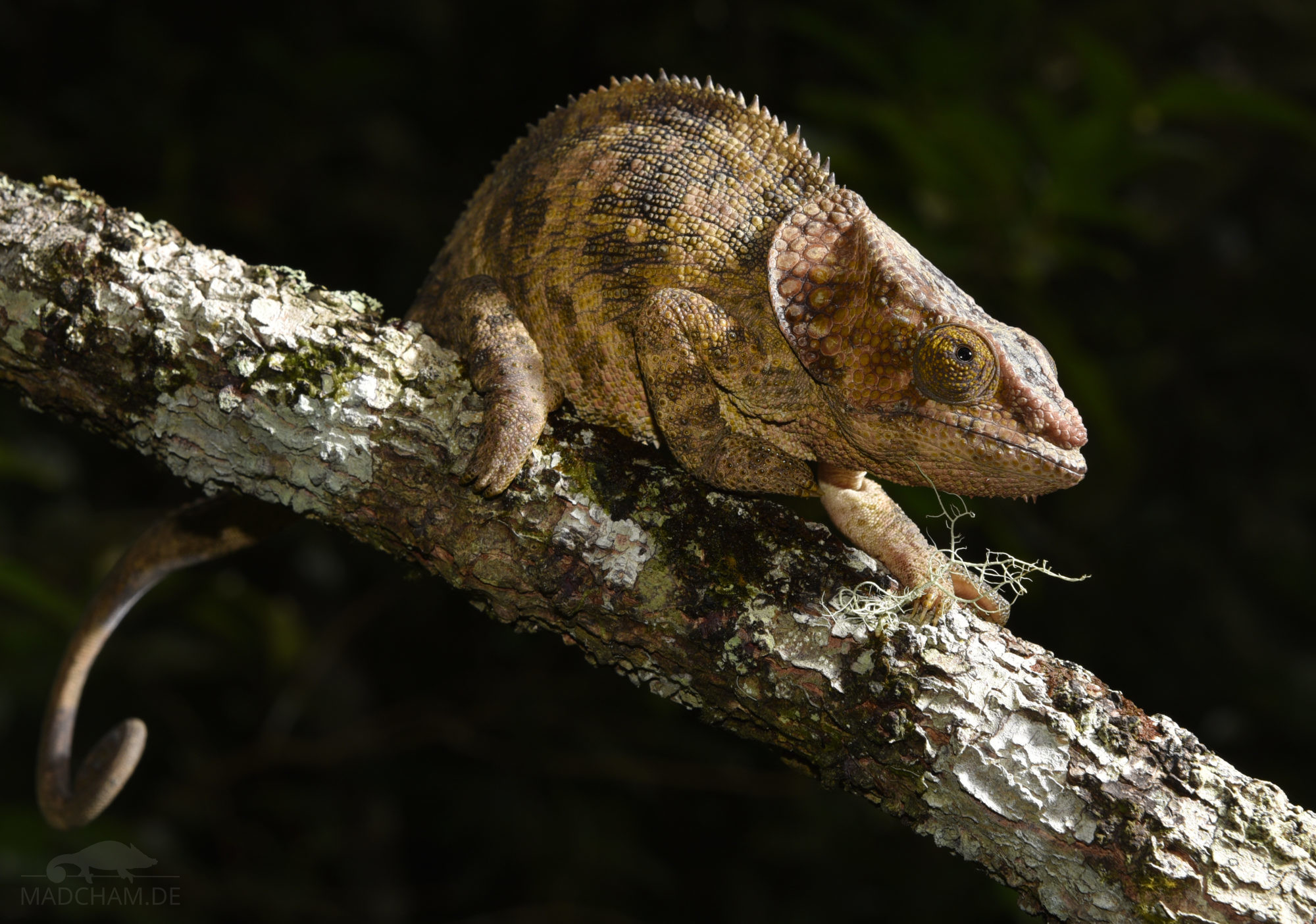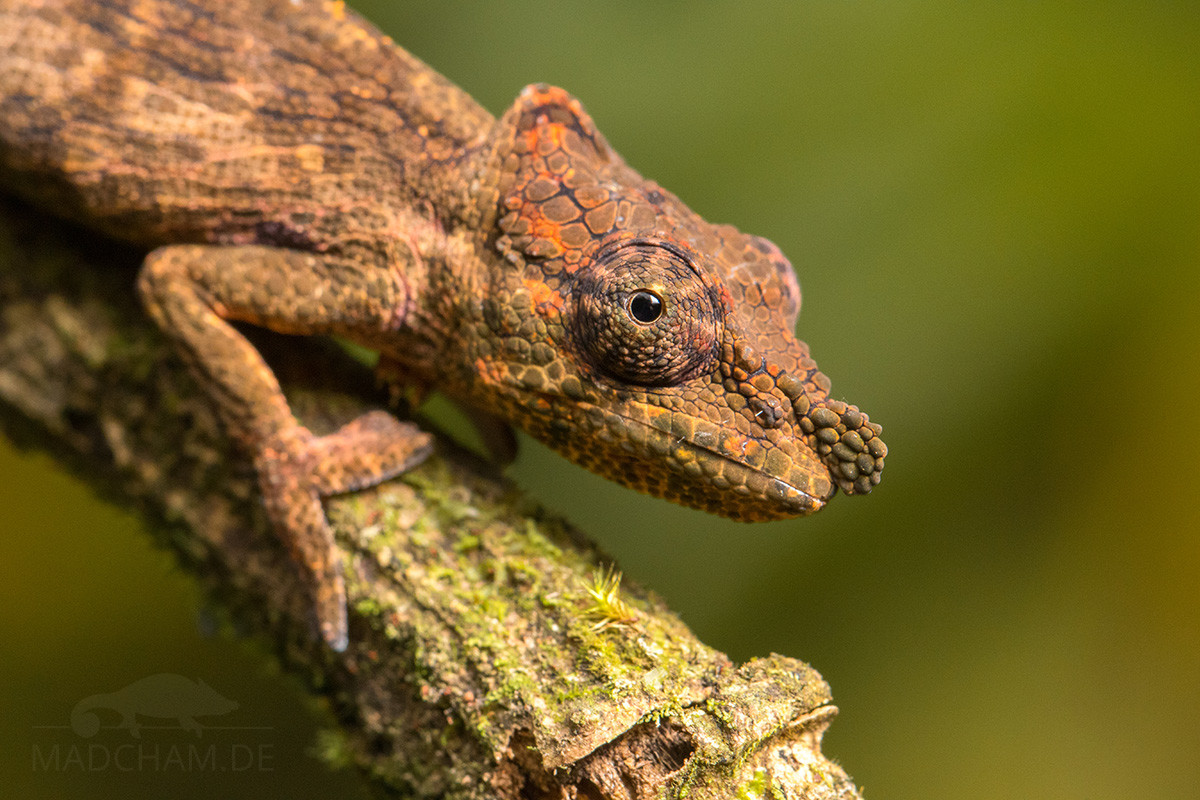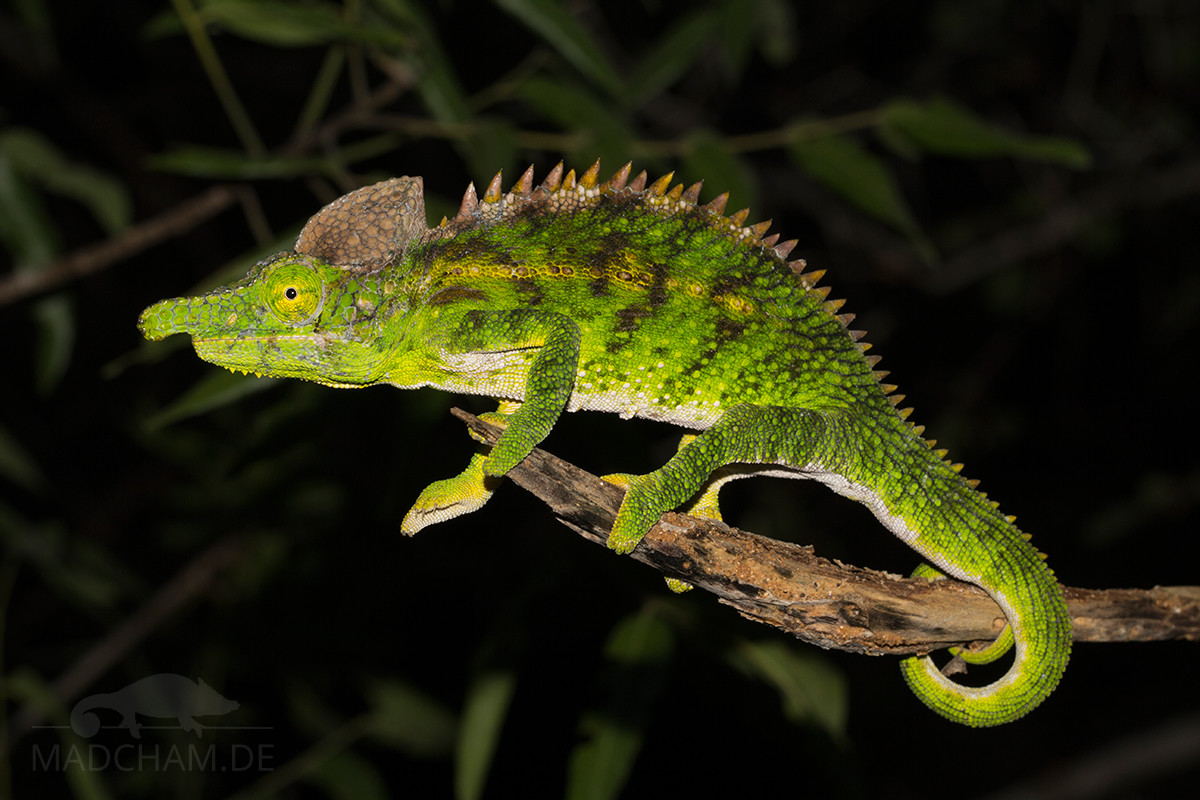Brookesia nofy
First description: Rakotoarison, Hasiniaina, Glaw and Vences, 2024 Origin of the species name: The biologist Andolalao Rakotoarison named the species after the Malagasy word for dream. On the one hand, this fits its origin,...
Calumma amber
First description: Raxworthy & Nussbaum, 2006 Origin of the species name: Christopher J. Raxworthy from the American Museum of Natural History, New York (USA) and Ronald A. Nussbaum from the University of Michigan, Ann...
Calumma ambreense
First description: (Ramanantsoa, 1974) Origin of the species name: The zoologist Guy A. Ramanantsoa of the University of Antananarivo, Madagascar, named the species after its origin, the Amber Mountain. Originally described as a subspecies...
Brookesia antakarana
First description: Raxworthy & Nussbaum, 1995 Origin of the species name: Christopher J. Raxworthy from the American Museum of Natural History, New York (USA), and Ronald A. Nussbaum from the University of Michigan, Ann...
Brookesia betschi
First description: Brygoo, Blanc & Domergue, 1970 Origin of the species name: Édouard-Raoul Brygoo, Charles Pierre Blanc and Charles Antoine Domergue of the then Institut Pasteur in Antananarivo, Madagascar dedicated the species to Jean-Marie...
Furcifer angeli
First description: (Brygoo & Domergue, 1968) Origin of the species name: The two zoologists Édouard-Raoul Brygoo and Charles Antoine Domergue of the Natural History Museum in Paris (France) named the species in honour of...
Calumma brevicorne
First description: (Günther, 1879) Origin of the species name: The German zoologist Albert Carl Ludwig Gotthilf Günther, then director of the Zoological Department of the Natural History Museum of London (Great Britain), borrowed the...
Calumma cucullatum
First description: (Gray, 1831) Origin of the species name: The English zoologist John Edward Gray was very brief in his description of this chameleon species: it consists of just keywords instead of a coherent...
Calumma fallax
First description: (Mocquard, 1900) Origin of the species name: The zoologist François Mocquard of the Natural History Museum in Paris (France) borrowed the species name from the Latin fallax, which means “deceptive” or “misleading”....
Furcifer antimena
First description: (Grandidier, 1872) Origin of the species name: The French naturalist Alfred Grandidier visited Madagascar three times between 1865 and 1868, traveling almost the entire island and producing one of the first maps...





















